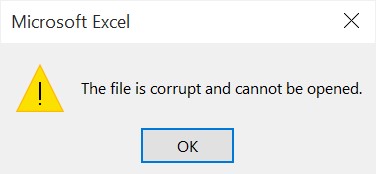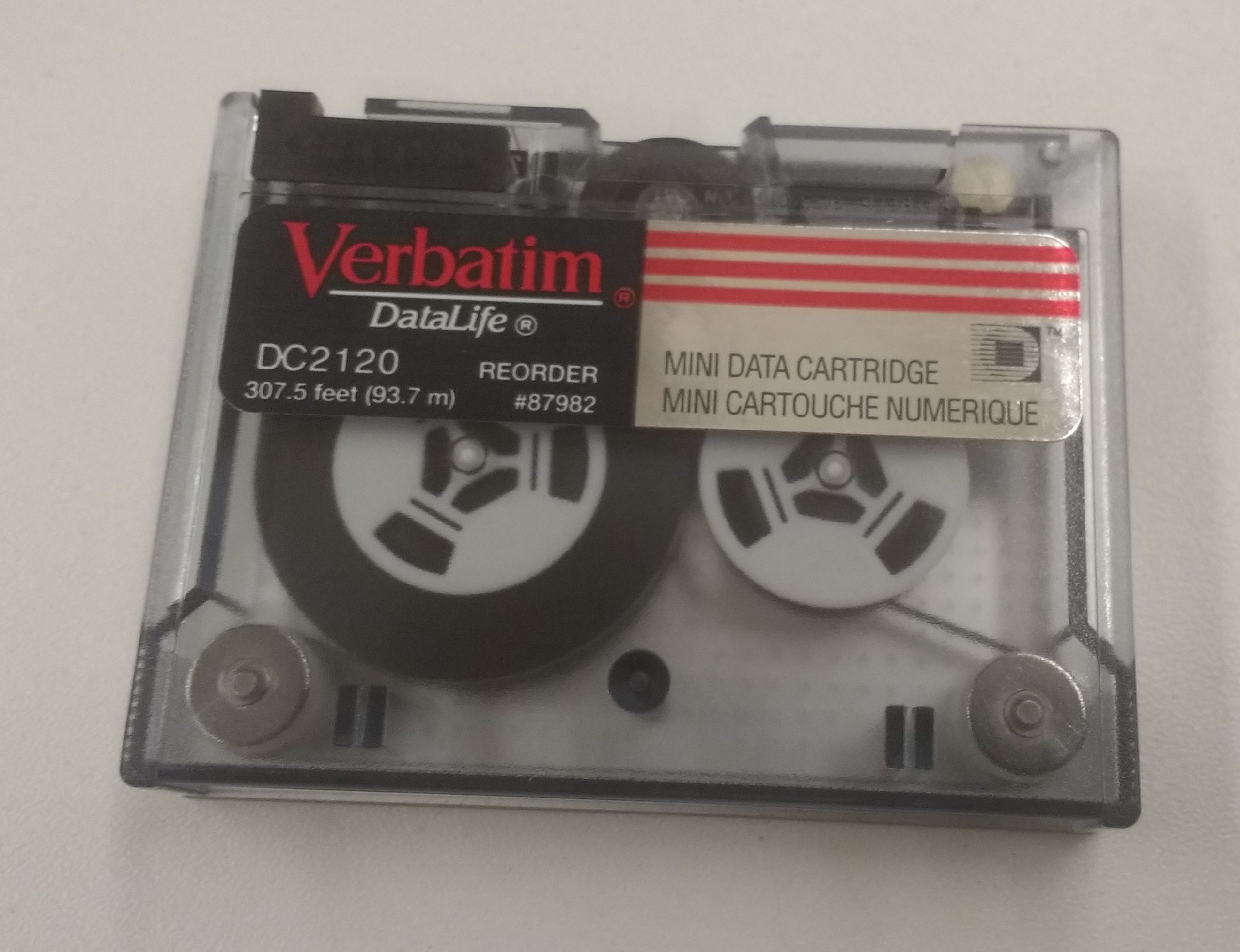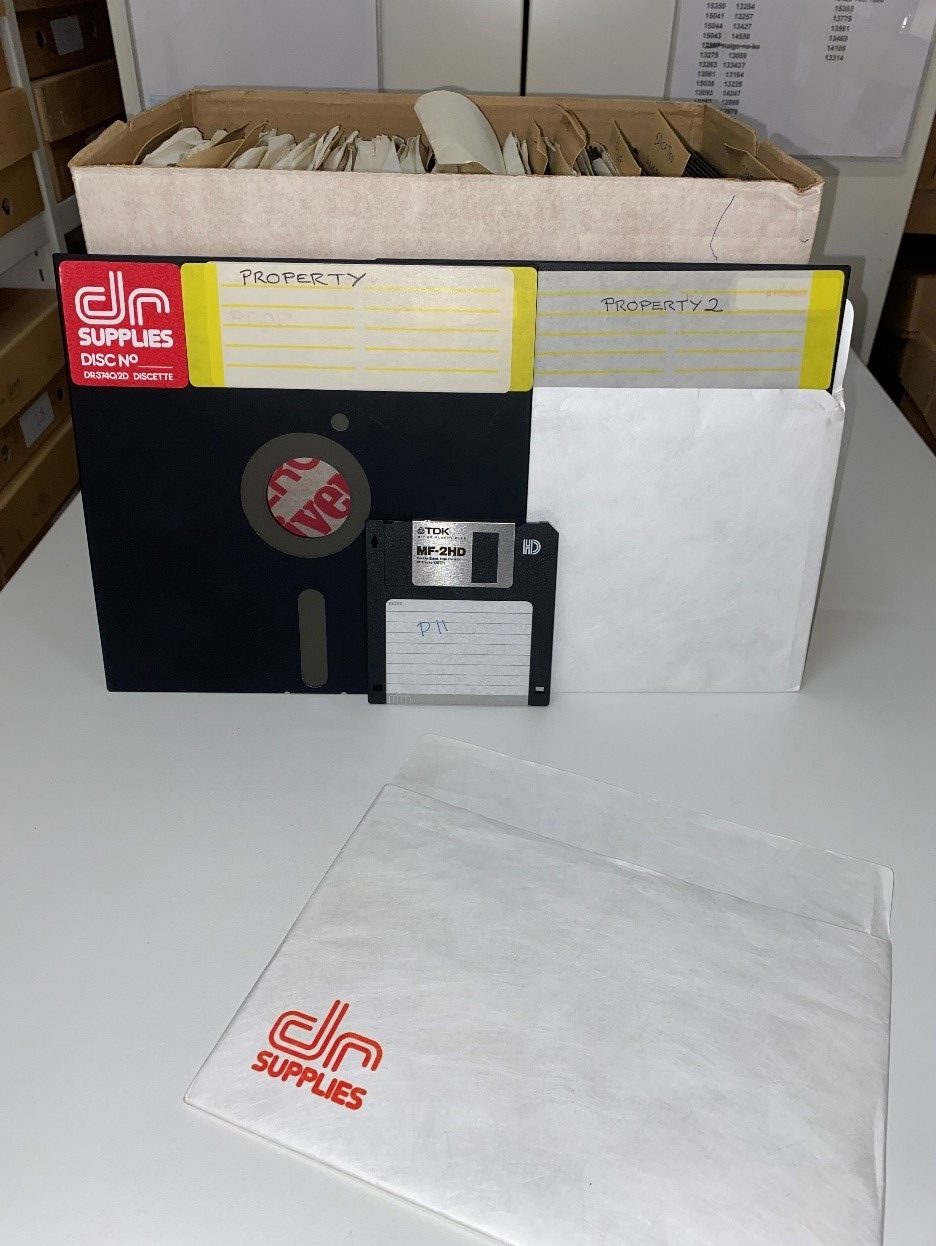Digital Preservation starts at home – Thoughts of a Trainee Archivist
- 4th November 2021
It’s Digital Preservation Day today, when the issues around digital preservation are highlighted. For our Archivists this is very important, with more and more items coming to us in digital format. This raises all sorts of issues. Tom, our Trainee Archivist, has a look at this. What are the potential problems, and how can we help ourselves with our own digital records?
Place your family photo album in the loft, or better yet, the archive shelves, and come back to it in 100 years. It will still be there, and most likely will be in a fit state to pick up and look through. Even if the pages have deteriorated, or the photos have faded in that time, you would most likely still be able to look through it and read the captions. All you potentially need is a keen eye for deciphering handwriting!
Now consider the same scenario, but slightly tweaked. Your family photo album is digital and you have it held on some sort of digital storage device, like a CD or a USB stick. Place that on the shelf and come back to it in 100 years. Has the device corroded, therefore rendering it unusable? Does your home computer in 2121 even have a USB port anymore? It certainly wouldn’t have a CD Drive. If you do somehow manage to put your USB into a machine, can you even view the files? Can your system software still ‘read’ .JPEG type images?
Let’s say that all this goes well for you – you’re in luck! You eventually click a photo to open it up, and you’re greeted with:

As the Worcestershire Archive and Archaeology Service’s new(ish) Trainee Archivist, part of my job has been to support the archive’s ongoing digital preservation strategy for managing and making accessible digital collections in our care. I am working with our digital strategy lead, Oliver Tickner, to carry out some basic steps in digital preservation. For me, this has involved a great deal of learning about something which I, like many people, had never really discussed nor given much thought to before now. In part to celebrate World Digital Preservation Day (November 4th!), I thought I’d share a little about what people can do to help preserve their digital material at home.
So, what is digital preservation? Why should we all do it?
Digital preservation at the archives, put simply, is the process of permanently looking after and making accessible those collections which come into our archive in a born digital form. It means preserving and caring for digital information, making sure that authentic copies and their representations can be stored safely, viewed, trusted and understood for the foreseeable future. It is the means by which we hope to store those family photos (collection policy remit depending!), so that if somebody would like to see them in 100 years from now, in 2121, we know the odds are on that they will be able to.
Just as the archive looks after paper documents, the ushering in of the digital age means that now we have to look after digital documents, too. The government, local councils, hospitals, businesses, institutions, and a great many individuals – all now rely on digital communication and digital information storage. Just as a register in a book, or letters between two individuals, are considered to be archival, and something we care about keeping, so now are digital databases, or email correspondence.
Take, for instance, one aspect of archives’ proverbial bread and butter – marriage parish registers. This draws to mind that as of the 4th of May, 2021, civil marriages in England and Wales are to be recorded in one single, apparently nationwide electronic register, as opposed to the prior system of registry books.
Registrars and the General Register Office will no doubt have put thought into how this digital data is going to be preserved. We need to ensure that family historians, genealogists and other researchers of the future will be able to view and comprehend the marriage registers of today. Whilst this might be the remit of specialists and professionals, we can all take steps to preserve our own personal digital collections. Helping to break down those barriers between creation, depositing with an archive and the archive making them accessible in the future.

Anyone recognise one of these?
But why do we need to preserve digital stuff specifically?
Just as our paper or analogue items of the past require proper storage, quality maintenance and sometimes, assistance in their interpretation to make them continually accessible as records, so do digital items need this same care.
Bit rot, disk rot, format rot, data rot – all are similar terms which are used to describe how our digital data (the core bit stream 0s and 1s on which digital is based) can, in one way or another, fall apart and become unusable. Our digital media, and whichever physical item upon which we choose to store it, decays over time. This can mean decay in the most literal sense, or in the sense that we can “forget” how to access it.
CDs and DVDs will degrade over time, eventually making them unusable, and whatever is kept on them irretrievable. Computer components can wear down over time or get damaged when exposed to certain conditions. Media, such as your average floppy disk is even vulnerable to magnets, meaning that if the two come into close contact, you stand a strong chance of corrupting the disk’s contents.
However, digital preservation is less about preserving the physical item, like the computer, CD, or floppy disk – what we would call the carrier – and more about preserving the data which is kept on them. That data, in whatever form it takes, then serves as our record.
If this seems a bit complicated, imagine the digital carrier – your DVDs, your old disused laptop, floppy discs, memory sticks– as a cardboard box, and the files that you keep on these devices as the paper documents inside that box. When a box is delivered to the archive, we value the contents most of all. True, the state of the box can tell us a lot, like how important the contents were to the depositor, how well they protected it, or maybe what it actually contains. However, what is most important is what is kept inside it.
What issues can digital “boxes” cause?

To even get as far as working out what exists on a carrier, we need to be able to read it. We need to be able to open the “cardboard box”, so to speak. But what do we do when the technology is no longer supported by our modern systems? The pace of media change is rapid – the laptop I’m writing these words on doesn’t even have a CD/DVD drive, something which was standard only a few years ago. How many years from now will CD and CD Drive manufacturing cease altogether? One possible solution would be to find some hardware which can read the carrier, like a portable drive or an older computer model.
However, this isn’t as easy as it seems. For instance, one deposit we hold within the Hive’s strongrooms contains some 657 8” floppy disks.
Whilst there are some manufacturers who still produce readers for 3.5” floppy disks, I know of no manufacturers who still create 8” readers. Old readers are difficult to come by. You could always find a computer with a built-in 8” reader – but to find one of those would be to find a computer aged decades old, by this point.
So, it is worth remembering that we should be proactive in how we store our stuff – making sure that we are staying up to date with technological formats, and moving our material from old “boxes” to new ones.
Protecting and checking your digital content
Once the box is open, you need to see what’s inside – without damaging the contents. Every time a digital file is opened, or in particular, moved, there is a risk of damaging the data it contains or losing it altogether. This is always something to be aware of when moving your files from one storage format to another. We have ways of doing this very safely at the archive, but when at home – you should at least always copy, rather than cut and move your files. Right click and check the “properties” to ensure the number of bytes transferred is the same on the originals as on the copy.
You should, at the very least, back up more than one copy of your digital material. This ensures that should one copy become damaged, decay, or is lost due to any sort of disaster, then you have an identical version with which to replace it, and ensure no data is lost.
In the long-term, checking your files intermittently, to ensure that they’re still in good condition for the future, is a great way to perform simple digital preservation. Whilst we at the archive can use software to help us do this, at the most basic level all you need to do is open your carriers and your files from to time to time, ensuring that you can still do this without any issues, and that everything is working. If there are any issues, consider replacing the damaged file with one of the copies you made.
These are just some things everyone can do to help reinforce their data and help keep it safe. Digital preservation is today a vital component of most archives, but also something still undergoing massive development. Therefore, the steps you take can help us with this challenging task. It can help us to break down the barrier between the home and the archive – easing that transition between the despositor and the archive “shelf”. There is rarely ever one solution as to how we preserve digital artefacts, and the processes archivists use are constantly being developed, made more robust and being evaluated. Particularly as they deal with older issues alongside new ones. This requires more of a problem-solving attitude, taking each issue on a case-by-case basis to establish what is needed. This also means that where digital preservation is concerned, it is better to start with “good enough” as a target, rather than wait for “perfect”.
So, what are the steps you can take to preserve your own digital collection?
- Stay up to date. Have something important to you on an old CD or an aging laptop you haven’t used in years? Consider transferring it to something more modern, and more stable, like a portable SSD drive.
- Keep copies – back it up! Anyone who has had a laptop die on them only days before a pressing deadline will have learned the hard way to back up their work, but it is important that you keep at least one copy of anything digital which you consider valuable. You never know when things can go wrong.
- Keep organised. Basic housekeeping habits with your digital items can go a long way to ensure that you always know what you have and where things can be found. This can mean ensuring that you’ve always given your files and documents sensible names, which reflect what is inside them, or making sure that your folders are organised reasonably. As a good rule of thumb, you should rarely have more than three levels of folder within each other.
Post a Comment